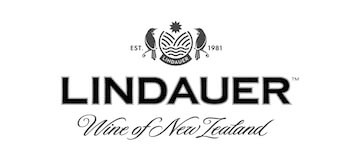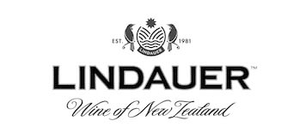Alex Casey looks back at 10 years of reality television in New Zealand, a genre which reflected both our viewing habits and the good, bad and ugly sides of our national character.
I don’t think I’m alone in feeling like watching television in 2019 has become kind of a stressful chore. What used to be associated with blobbing out, square eyes and killing brain cells has now become a draining mathematical, intellectual and spiritual exercise. How much time have you got? Who are you watching with? What platform? What’s your emotional capacity? What’s that latest thing everyone is making memes about on Twitter? Do I care? Am I truly ready for Baby Yoda when I haven’t even finished Mad Men???
There’s so much content at our fingertips now that the experience can become numbing. When Disney+ arrived in New Zealand last month, I signed up immediately and began perusing the digital halls of my childhood, desperate for a nostalgia fix. Except I couldn’t decide what to watch first from the 600 films and 7500 episodes of TV. I settled on five minutes of James and the Giant Peach, then a bit of Snow White, then skipped through Christopher Robin to the bits with Winnie the Pooh in them. I felt yuck and have barely touched it since.
The Spinoff’s Decade in Review is presented in partnership with Lindauer Free*, the perfect accompaniment for end-of-decade celebrations for those looking to moderate their alcohol content (*contains no more than 0.5% alc/vol).
And that’s just the latest chapter in what has been a bloody long 10 year saga for television. C4 changed to FOUR, and then Bravo. TVNZ6 relaunched as U. Heartland came and went. We shifted from analogue to digital. DUKE arrived. The era of time-shifting and +1 began. Sky began the decade as a local tech giant (MySky!) and ended it in the shadows of international tech giants (Amazon!). TVNZ On Demand and Three Now became things that people used. Lightbox launched. Then Netflix. Then Neon. Then Amazon Prime. Then Disney+.
All the while, a lot happened at Three.
Thankfully, reality television has remained one of the only certain things in these uncertain times. It’s a genre that spilled all over local telly this decade with the gusto of a housewife throwing a cab sav, and has taken on a watercooler conversation role that would leave me (and many others) absolutely stranded at social events were it ever to disappear. Reality TV is my sport – a topic that I know I can lean on in awkward social events and not kill the conversation. Whether people love reality TV or hate reality TV, they’re always keen to talk about reality TV.
It wasn’t always like this. If we travel back to the start of the decade, the TV that everyone was talking about was Outrageous Fortune. In 2010, 725,000 of us sat down in our lounges, together, to farewell the Wests. By contrast, in 2019 only 197,600 stuck around to watch the season finale of prequel Westside – and that show was one of the lucky ones. I don’t think it’s a reach to say that Outrageous Fortune left a cultural void in New Zealand that no drama has been able to fill since, no matter how many nights a week it was on, or how much money was funneled into it.
It was during this gap in cultural chatter, as eyeballs slowly drifted towards time-shifting, Nordic noir and the siren coos of social media, that reality television crept up to the plate and took a huge swing. The genre first took form in the noughties under Dame Julie Christie, whose company Eyeworks made every local venture from Changing Rooms (competitors change a room) to Going Straight (competitors go straight). At one point in the mid-2000s, an ex-employee told me, there was an Eyeworks reality show on at 7.30pm on every major channel.
But it was in the 2010s that Christie’s homegrown crop exploded into a giant Hamilton gardens extravaganza of glossy, introduced international offerings. The decade opened with the second season of New Zealand’s Next Top Model and the first iterations of Masterchef and The Apprentice NZ. Not only were these all extremely glitzy global competitions promising fame, fortune and a cookbook deal, they also offered seamless product integration, another opportunity for networks to make money outside of Wolfgang West cracking a woody with ya mate’s mum.
Take the list of challenges from The Apprentice NZ. Week two: sell Jockey undies. Week three: Sell a Magnum ice-cream sandwich. Week five: sell a regular Subway sandwich. Rewatching New Zealand’s Next Top Model in 2019 on The Real Pod, the amount of money behind the production is outrageous, every moment a brazen sponsored effort from Vodafone, Vitamin Water (another best of the decade), Covergirl, Nivea, Max, or – bordering parody – the savage elimination jandals, sponsored by Havaianas.
So we already knew at the start of the decade that reality TV was cheap to make, easily sellable and raked in big audience numbers, but did it also have the potential to serve a greater cultural purpose? Just ask The GC, the 2012 reality series that received $420,000 from NZ on Air to follow the lives of Māori twenty-somethings living in the Gold Coast. Granted, it was originally pitched as a documentary series based around seven families, but after the premiere in May 2012, it was clear that NZ On Air had just funded our own Jersey Shore.
The series explored the lives of the aspiring singers, models, tradies and fitness freaks as they “worked hard and played harder” on the Gold Coast. There was drinking, there was hair gel, there were a lot of expensive-looking nightclubs. So far, so MTV. But what set The GC apart was its distinctly New Zealand flavour, from the total dearth of fiery, theatrical drama to the subtitles explaining either the colloquialisms of the day (“neff” and “jelly babies” come to mind immediately), or translating te reo phrases into English.
Reviewers were furious. “Their coded language was considered to be of such great importance that it was given subtitles to interpret the in-house slang,” wrote a reviewer for Stuff at the time. “Pass me the dummy. This one sucks as much as this show.” The Herald really hated it too.“The GC is designed strictly for entertainment value, only without much entertainment, and not a lot of value.” 333,000 people watched it on television and 147,000 watched it on ThreeNow, the first big hit for the service. But the big reality shocker of the year was still to come.
For better or worse, The Ridges symbolised the moment that the Kardashianification of the world reached little old New Zealand, which is noteworthy even though everyone would probably rather forget it. Sally and Jaime Ridge were gossip page darlings, so it seemed only natural that a reality series should chronicle their every party, boozy brunch and specialised stage mouse hire. It was was reputedly described as a “dark stain on Kiwi-made television.” We quickly retired the original reality series that year and went back to our big, bold, international franchises.
But despite all the outrage, these early 2010s shows birthed the glory of the live-tweet. I have fond memories of gathering with my nearest and dearest to sit in complete silence while we all made jokes to strangers on the internet. Many of my friends used Twitter solely for the live tweet joke-a-thon of the mid 2010s, their accounts now dormant tombs of #XfactorNZ in 2014. Oh how I envy them. Side note: all your bad tweets about The Ridges are still there and I’ve read all of them but am not sharing because I don’t want to get you cancelled for Christmas.
Then there were the golden Mediaworks reality years and the Lindauer-worthy television of The Bachelor NZ in 2015, the perfect soothing balm to the venom of X Factor NZ. The Block NZ bloated out to four nights a week, Married at First NZ arrived in all its controversial glory and Dancing With the Stars NZ somehow came knee-sliding back into relevance. All the while, TVNZ saw what was happening across the playground, and Survivor NZ, The Great Kiwi Bake Off, Project Runway NZ and Heartbreak Island quickly entered the arena.
Māori TV also started creating their own slate of original reality content in the mid 2010s. Game of Bros arrived in 2016 as an antidote to the po-faced world of reality romance. “Think of some ways you could improve The Bachelor,” wrote Dan Taipua at the time. “First of all, you’d switch the gender roles. To keep things fresh, make two women the lead talent. Since you spend most of your time mocking the show anyway, make those two women comedians.” The sad end of Homai te Paki Paki gave way to the simple smash hit Sidewalk Karaoke.
Not only did reality television soak up TV schedules and whatever declining audience numbers were left, it also served up some incredible characters. Long may we remember Fraser from MAFSNZ sitting on the log flume having an existential crisis, or Trev, the beguiling ex-Navy man who makes delicate heart-patterned pastries on The Great Kiwi Bake Off. Or the sweet boys on The Block NZ who built a death trap and won our hearts. Or aspiring popstar Saxi. If James Griffin wrote any of those characters, reviewers would say they were too much.
Of course, reality television has also shown us our bad sides. The last season of MAFSNZ ran the gauntlet of structural sexism, and showed how gender violence can encompass everything from slut-shaming to domestic violence charges. That moment on the boat in the Real Housewives of Auckland tore off all the glitzy artifice of the show to reveal the rotten racism that still exists in this country. It’s also important to note that on our three largest channels, the genre has remained largely populated by people who are white, cis and straight.
This is where streaming services and the expanse of the online universe can right some representation wrongs. TVNZ Ondemand’s House of Drag carved out a space for queer representation and made a winner out of trans drag king Hugo Grrl – a world first for the reality TV genre. The rise of IGTV and Instagram stories as a go-to entertainment source means that everyone is technically a reality television star, however mundane their lives are. Instagram fame can lead to television fame and vice-versa – just ask Samuel Levi or Iyia Liu.
The definition of reality television will continue to loosen and change, but I just can’t see us tiring of watching ordinary people in extraordinary situations. TVNZ are putting all their might behind The Bachelorette NZ, with host Art Green symbolising the moment that our reality TV universe became self-sustaining. But perhaps the most telling of all is the fact that Three are bringing back Dancing With the Stars NZ and The Block NZ despite slashing almost everything else, proving that reality TV could be the final network island in an ever-rising content stream.
The television phrases of the decade:
- Time-shifting: The recording of live television onto a thingamajig to watch later
- Plus one: All the terrestrial content you know and love, delayed by one hour
- Streaming: The continuous flow of content via video on-demand services that has resulted in you never enjoying a relaxing night of television ever again
- For the right reasons: Why anyone enters a reality television show – definitely not for the Instagram followers or free teeth whitening kits.
The decade in a sentence:
Reality television might have won the battle, but streaming will win the war.


